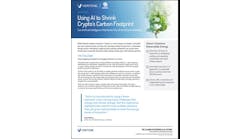In high price environment, ‘wishful thinking’ isn’t a winning energy strategy for businesses
After years of consistently low prices for natural gas that help set the price of electricity, it’s easy to understand why a business might have become complacent about its energy supply and been caught off guard when rapid inflation took hold over the past year.
No one has a crystal ball to see into the future, but if the war in Ukraine has taught us one thing about energy, it is that energy commodities and prices are global. Events on the other side of the world can and will impact businesses in North America. When the war began, few would have predicted its impact on oil, coal, natural gas and electricity prices in the United States. But with Europe’s decision to look for new energy suppliers to replace Russia, the United States will be increasing its capacity for liquefied natural gas export to other parts of the world. Add new European gas demand to the ongoing supply chain and staffing issues hampering gas producers, and it is with some level of certainty that we can predict North American gas prices will remain above their pre-pandemic levels for some time.
And, importantly, the price of gas is still the primary factor driving the price of electricity in most markets. More expensive gas equals more expensive electricity — a double hit to the bottom line of many businesses.
A three-step strategy to maintain rational energy costs in an irrational time
Amid this environment of increasing energy uncertainty, volatility and complexity, businesses still have budgets and sustainability goals they must meet. Fortunately, those goals are still possible through a smart strategy that can overcome the hurdles we see today.
Step 1: Reduce. The cheapest energy is the energy your business doesn’t use. The cleanest, most sustainable energy is also the energy it doesn’t use. That’s why every energy strategy to mitigate a high-price environment should start with energy efficiency, and sustainable energy strategies should start there, too. Businesses should take an advanced approach to monitor the energy use of their systems and equipment, then adjust their operations and maintenance to increase efficiency. Conducting an energy audit to identify opportunities for retrofits and efficiency upgrades can drive energy reductions further.
Step 2: Produce. The lingering COVID-19 pandemic-related supply chain struggles have not left distributed energy technologies like solar panels and batteries unscathed. However, the price of many of these technologies is still competitive with energy from the utility for businesses in many areas, offering the opportunity to not only reduce energy costs but also reduce greenhouse gas emissions. When on-site distributed energy resources are configured as a microgrid, they can also provide businesses with increased energy reliability and operational resiliency, a must-have for businesses that need to avoid costly disruptions to operations every time the power goes out for even a few hours.
Step 3: Source. For most businesses, reducing and producing their way to total energy independence isn’t possible. Electricity from the grid is necessary. But that doesn’t mean a standard contract with a utility or retail electric provider for power from the grid is the right choice. Businesses, particularly large energy users, can partner with energy experts to explore opportunities for long-term contracts such as power purchase agreements, including contracts for 100% renewable energy from nearby solar or wind projects, if desired, to help meet sustainability goals.
Every business is unique in its energy usage and needs, which means every business must take a unique journey to reduce energy costs in a high-price environment as well as increase energy sustainability and resilience. However, every journey can and should fit within the framework of those three steps: reduce, produce, source.
Planning a new energy strategy along those steps and implementing it is no easy task. Most businesses will need a trusted partner with energy expertise to help. At Veolia North America, we have decades of experience helping organizations across the municipal, industrial and commercial spectrum navigate their journeys. For more ideas on how to control energy costs, read Veolia’s blog post on Summer Surges: Strategies to Mitigate Rising Energy Costs.
Amin Najjar is president and CEO, facilities and building services, at Veolia North America.








